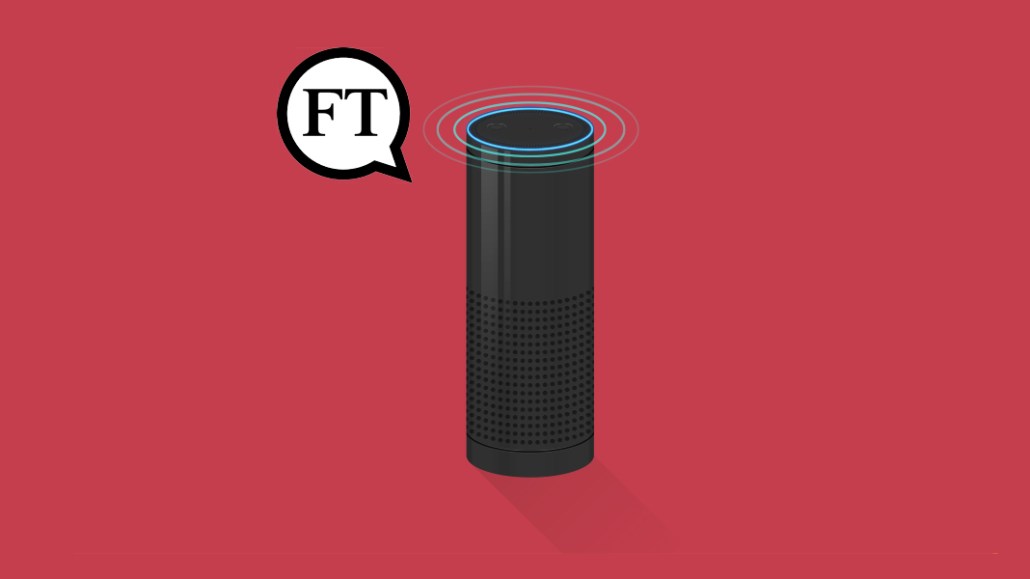
FT Labs — the publisher’s four-person experimental unit — has been converting its text articles into audio to figure out its readers’ appetite for listening to articles.
The publisher has been using Amazon Polly to convert the text articles into audio, read by artificial voice named Amy. Written articles take between one and three seconds to convert into audio. Both short news items and long-form, evergreen pieces are converted, like a profile on U.S. boxer, Jake LaMotta or a feature on why Lisbon is so popular with tourists.
The publisher has opened up audio articles to 10 percent of its subscribers and is considering opening it up to the remaining 90 percent by the end of the year, according to the company. These are also available in Listen FT, the publisher’s progressive web app.
Head of FT Labs, Chris Gathercole, said it was too early to share any results on how people behave with audio articles, but early evidence shows that people are coming back regularly.
In the next few months it will smooth out some rhythmic and tonal hiccups. For instance, Amazon Polly used to treat the word “Trump” as a verb, so when it was read out as a verb, rather than as a name, the cadence was jarring. The FT fixed this by programming an extra full stop during the conversion process each time the word “Trump” appeared in a text article. According to Gathercole, the Amazon Polly team has corrected this since his team had raised it with them. Equally, the FT uses the abbreviated “m” for “millions,” which Amazon Polly took to mean “meters.”
“These tiny adjustments need to be done constantly across the board. The providers are also fixing these, so we’re confident that in the next few months we can open this out to all subscribers,” he said, speaking on Sept. 27 at a We Are Social event.
Another sticking point: Much of the useful content — stock prices and market data — is in list-form and not packaged up to be read out loud. “That’s the main gap within the system; it sounds like an audio car crash when read out,” he said. “We have a lot of back-end work to do there.”
Gathercole said there’s no reason why eventually all the FT’s 300 daily articles can’t be converted into audio when users want to listen to them.
With data from research firm Mintel finding that 62 percent of Brits are happy to use voice commands to control devices, it’s critical the FT is working out how to deliver in on these devices too. On Amazon Alexa and Google Home there are a number of media companies who read out daily headlines, which makes sense for open-access publishers. Giving away content for free would challenge the assumption that the FT is worth paying for, said Gathercole.
“We need to make it so these devices become more useful for subscribers,” he said. “Some people use us for entertainment, or to be informed, or when they are in research mode. We need to support all these different mindsets through voice controls. Passive listening is not the future.”
More in Media

From sidelines to spotlight: Esports events are putting creators center stage
Esports events’ embrace of content creators reflects advertisers’ changing priorities across both gaming and the wider culture. In the past, marketers viewed esports as one of the best ways to reach gamers. In 2025, brands are instead prioritizing creators in their outreach to audiences across demographics and interest areas, including gaming.

Condé Nast and Hearst strike Amazon AI licensing deals for Rufus
Condé Nast and Hearst have joined the New York Times in signing a licensing deal with Amazon for its AI-powered shopping assistant Rufus.

Media Briefing: AI payouts may be entering a new era
AI compensation is evolving — and new models, not just publisher demands, are driving the shift beyond flat-fee licensing.








